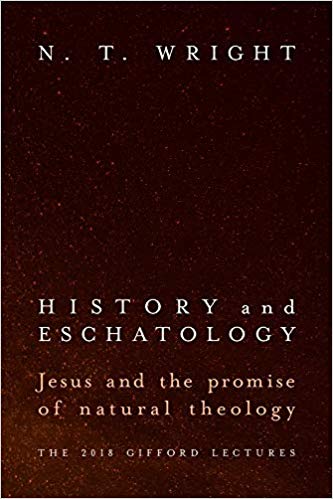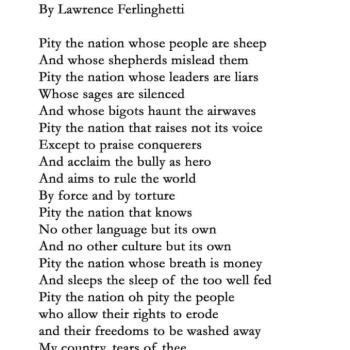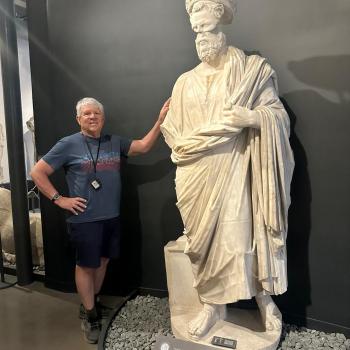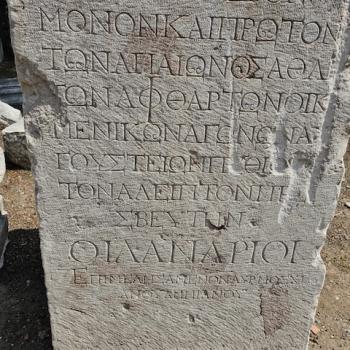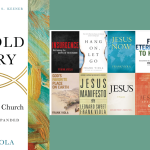Chapter Six is entitled The New Creation, and in many ways it revisits Tom’s classic text Resurrection and the Son of God, debunking various objections to the bodily resurrection of Jesus, among other things. But near the beginning of the chapter there is this interesting observation “The model of ‘knowledge’ which has been privileged in Western culture is certainly focused on the left brain… but it is also…an attempt at controlling epistemology, a ‘knowing’ in the service of power.” (p. 188). Wright then is talking about a real paradigm shift when it comes to knowing, and what can be known, and he wants a more whole brained, including right brained approach to the whole matter, using a sympathetic approach to the ancient data.
He sums up a major point as follows: “Paul declared that the gospel was foolishness to Greeks and scandalous to Jews. We might expand this: the resurrection is impossible for the Epicurean, undesirable for the Platonist, unnecessary for a Deist, meaningless for a pantheist, and scary for an emperor. But…. within the world shaped by Temple-cosmology, a Sabbath-eschatology and an image-bearing anthropology— the resurrection of the crucified Messiah is the new microcosmos through which the new great Sabbath is launched. It is the declaration that the new world has been born in the midst of the old, and that makes sense of the old like nothing else could or would. The resurrection is simultaneously the foundational and paradigmatic event of the new creation, and also, on that basis a very strange though actually sense-making event within the present creation.” (pp. 190-91).
Tom goes on to explain how resurrection means not merely the redemption of human beings, but also the eventual renewal of all creation as well. God will make all things new. Jesus’ resurrection is just the first fruits of that huge urban and cosmic renewal plan. It is of course a reaffirmation of the goodness of creation itself. “But if Easter was the start of a new creation which is a creatio ex vetere not a fresh creatio ex nihilo, if the resurrection was therefore an act of love, God’s love for the old world and its image-bearing inhabitants, then the old creation as it plays host to the new is itself validated. It’s silent witness to the creator (as in Psalm 19) is retrospectively reaffirmed.” (p. 199). Tom compares this to when a college receives some remarkable treasure as a gift, but has no place to put it, so it renovates the old building to make room for the new gift. The new involves a renewal of the old.
He then spends more time explaining the epistemology of love: “love is not just an ethic, nor just an emotion, but the highest mode of knowing, including all others within it. ‘If anyone thinks they know something’ says Paul to the Corinthians, ‘they don’t yet know as they ought to know; but if anyone loves God, they are known by him (1 Cor. 8.2-3). The real knowledge isn’t your knowledge of the world or of God, but God’s knowledge of you. Your answer to that ‘knowledge’ is first and foremost love, because revelation itself is love. That’s why loving God and the neighbor are the greatest commandments, overtaking all sacrifices and burnt offerings. That’s why faith, hope, and love are the greatest, love above all, not just as virtues but again as modes of knowing. Faith is love reaching out to heaven, only to discover that heaven has come to earth and is busy repairing it.Hope is reaching out to the future, only to discover that the Age to Come has arrived, Sabbath-like, in the present, giving rest and refreshment to the tired old working world. It isn’t just that love transcends the objective/subjective divide, though that is true too…a further dimension of the epistemology of love, in its new manifestation: that all knowing is communal knowing….Thus all knowing is engagement, involvement and not merely detached observation.” (pp. 207-08).
“Such belief takes a whole transformed person, not just a convinced mind. It takes a new kind of community to confess it properly, not a bunch of isolated individuals…It involves humility, recognizing that all knowing involves jus small short-sighted creatures engaging with a wide and complicated world, and gratitude recognizing that resurrection is above all the genuine foretaste of the new creation” (p. 211).


